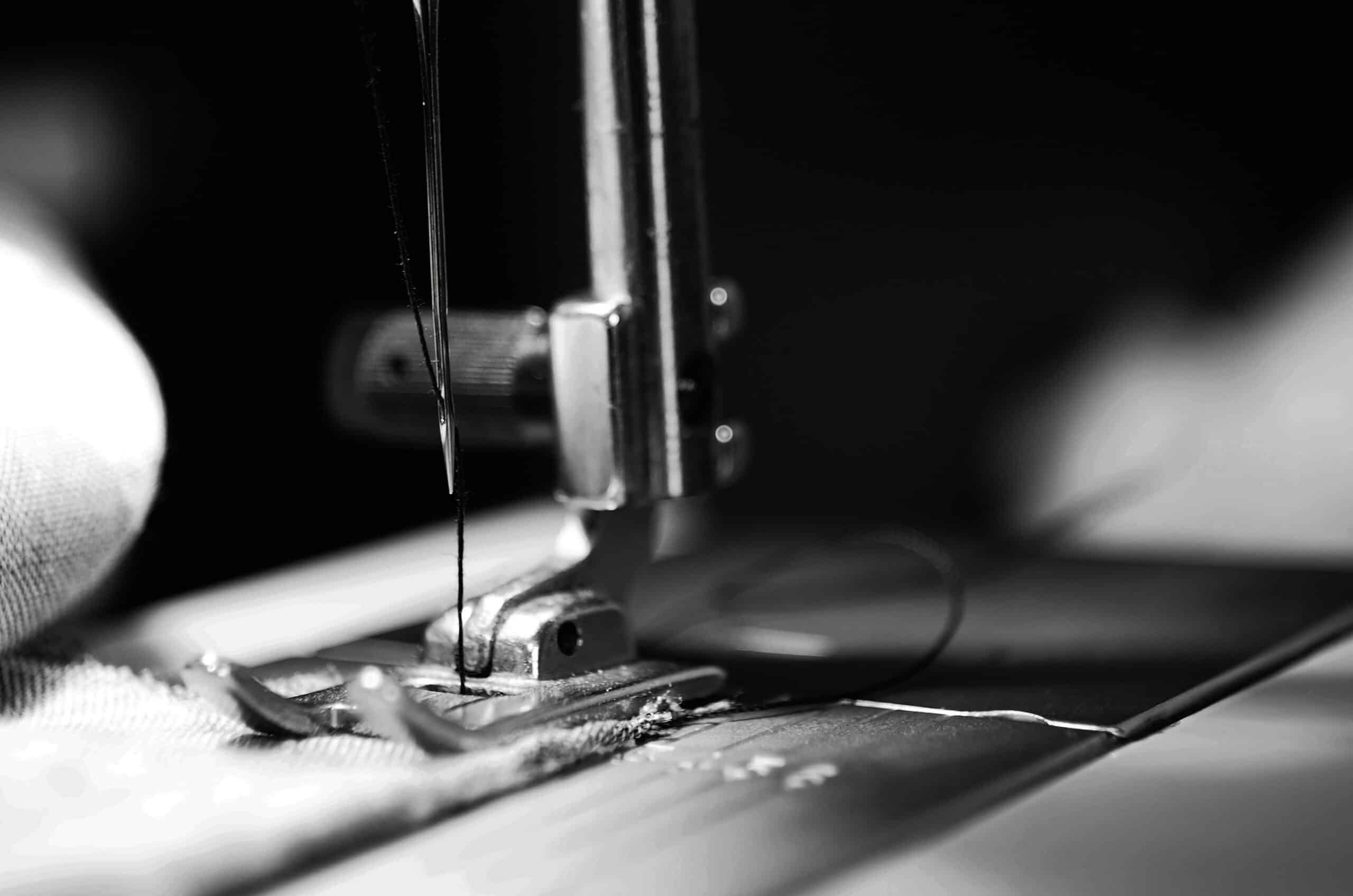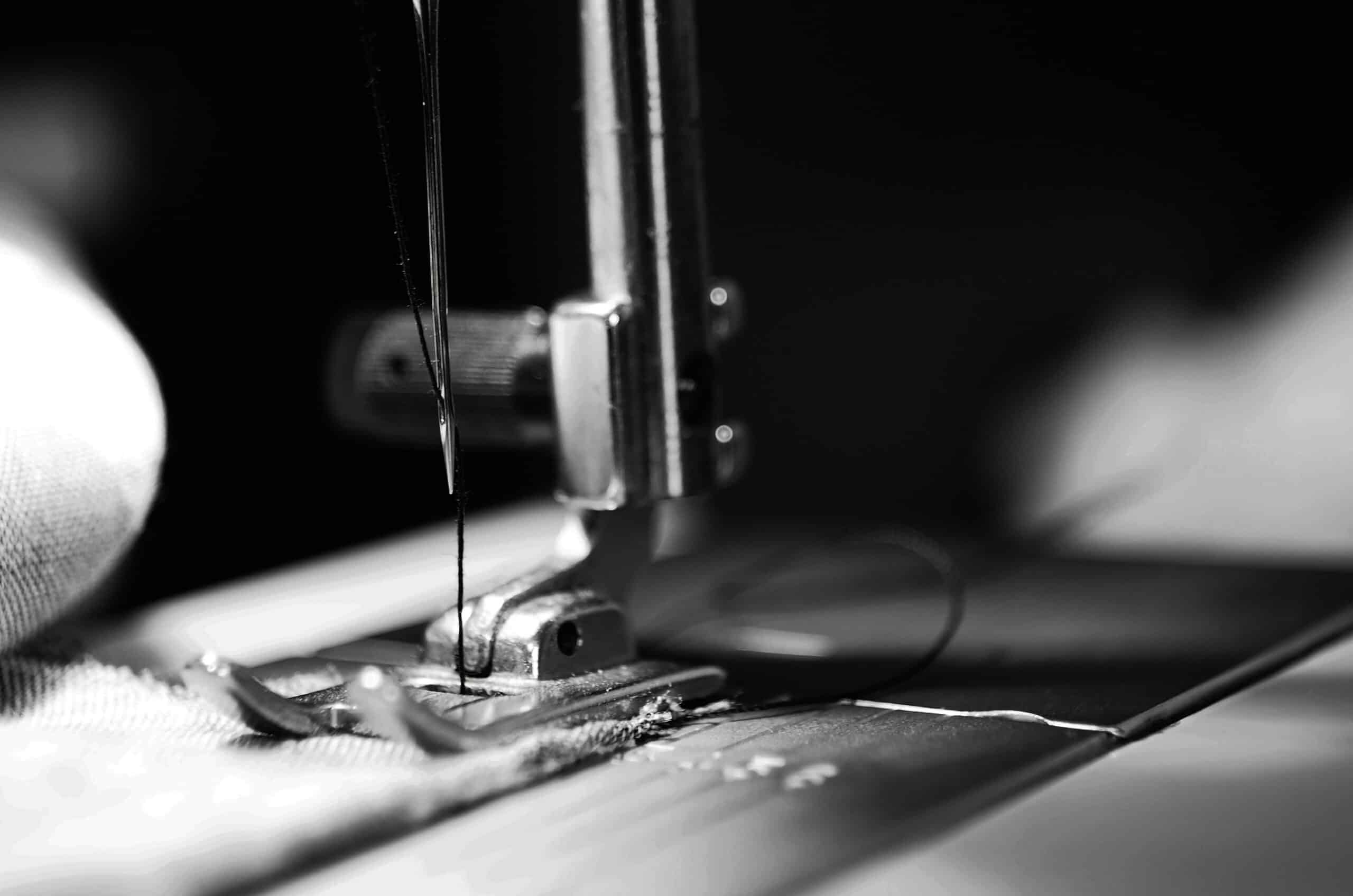Banner image courtesy of J Williams
Selecting the right fabric for a sewing project is among the most thrilling (and difficult) aspects of the sewing process. With so many textures, patterns, and fibres to choose from, it’s easy to get lost in the options. But the truth is, the material you choose plays a huge role in how your finished piece will look, feel, and fit. Sure, it’s tempting to pick something just because of the colour or print, but paying attention to its characteristics is just as important. I’ll walk you through five essential tips to help you confidently select the right fabric for your next sewing adventure.

Research
So, how do I choose the right clothing fabrics? The first step is to do some digging. If you’re using a sewing pattern, you’re already one step ahead. The recommendations printed on the envelope or in the instructions are incredibly helpful. They’ll point you toward the types of materials that suit the design best, whether that’s something light and airy or a bit more structured with stretch.
But if you’re venturing into the world of self-drafted patterns or simply winging it without a guide, it helps to look at clothes you already wear and love. Have a peek inside your wardrobe, turn a few pieces inside out, and check those little care labels. They’ll usually tell you what kind of fibre you’re working with. Visiting shops and seeing how garments are made can also spark ideas and give you a sense of what will work and what won’t.
And if you have a chance to visit a store, take it. Get your hands on the material and feel how it drapes or behaves. This will give you a sense of whether it’s right for your project. You can also order swatches online if that’s easier. A quick social media search using the pattern’s hashtag can be surprisingly helpful too. Seeing how others have made the same design can show you how different materials affect the final look.
Project Type
Once you’ve done a little homework, the next big filter is the project itself. Ask what the piece needs to do. Is it heading out into summer heat, layered in winter, or pulled on every day for school runs and dog walks? Something that’s going to see constant wear, like a pair of daily pants, calls for a durable fabric for garment making with some weight and resilience. Medium-weight twill, denim, or sturdy cotton blends hold their shape, take a beating, and soften with washing without falling apart.
Fit matters too, so if your design hugs the body, you’ll want stretch, whether that comes from added elastane or a naturally springy knit. A relaxed cut is more forgiving and opens room to play. Stable wovens, washed linens, even softly brushed blends can all work when you don’t require precision cling.
Then think about structure. A blazer, tailored vest, or anything with sharp lines needs a garment fabric that can stand up to wear and tear. Medium to heavyweight options, sometimes with interfacing, help keep lapels crisp and seams clean. On the flip side, if you’re sewing gathers, tiers, ruffles, or anything meant to float and move, choose a lighter material that drapes, like rayon challis, lawn, voile, or a well-washed linen.

Fibre Content
This factor might seem small at first, but it can shape how your finished piece turns out. Whether you’re working with all-natural fibres, synthetic ones, or something blended, the type of fibre used plays a big role in how your garment looks, feels, and holds up over time.
- Comfort: A natural fabric for garment making, like cotton, linen, and wool, tends to breathe better and feel gentler on the skin. If you’re making something for warmer weather or daily wear, this can be a huge plus. Synthetics like polyester, on the other hand, can sometimes trap more heat.
- Durability: This is where synthetic fibres shine. They usually handle wear and washing better than some natural fibres, which can be more delicate over time (especially options like silk or loosely woven cotton).
- Feel: Natural fibres often bring a soft, lived-in texture. Synthetics usually feel smoother and more uniform, but they don’t always have that same tactile charm.
- Care: If you’re looking for something low-maintenance, synthetics are generally the easiest to toss in the wash without worry. Natural fibres, especially wool or silk, usually ask for a gentler approach.

Fabric Weight
The weight of your clothing fabric can highly impact how the garment looks, feels, and moves. It’s usually measured in GSM (grams per square metre), which tells you how dense or heavy the material is. It might sound technical, but once you get a feel for it, it’s surprisingly intuitive.
- Lightweight (1–150 GSM): Think floaty, breezy, and delicate. Materials in this range, like voile, chiffon, or silk, are ideal for soft, airy pieces like summer blouses, light dresses, or linings. They feel lovely on but can be a bit fiddly to sew, so patience helps.
- Medium-weight (150–250 GSM): This range is where a lot of everyday clothing falls. Cotton, linen, and similar materials are great here, offering structure without being too stiff. Perfect for button-down shirts, relaxed trousers, and casual dresses.
- Heavyweight (250+ GSM): These are denim, canvas, and some wool blends. They’re ideal for pieces that need structure and resilience, like coats, trousers, and utility-style jackets.
Style
Style is one of those factors that pulls everything together when you’re choosing what to work with. A colour might look perfect under the shop lights but different in your living room or out in daylight, so it’s always smart to see it in a few settings before committing.
If you’re working with patterns, think about how they’ll sit on the body. A bold floral might look amazing until one flower ends up in the wrong place. Stripes and checks can add detail, but they’ll need a bit of extra care to keep them lined up just right. And then there’s nap, which is the texture that changes depending on which way you brush your hand over the surface. Materials like velvet can look darker or lighter depending on direction, so all your pieces need to be cut facing the same way. It might mean using a bit more fabric, but the finished result will be worth it.
Care Instructions
Before settling on any clothing fabric, it’s worth checking how it needs to be looked after. Some materials are easy, toss them in the wash and go, while others demand a bit more attention, like gentle handwashing or even dry cleaning. If your schedule’s packed or you prefer low-maintenance clothing, those extra steps might become a hassle. Also, be mindful when combining colours and textures. Some shrink more than others, and darker dyes can run, which could be a problem if you’re working with contrasting shades. A little attention now saves a lot of frustration later.


